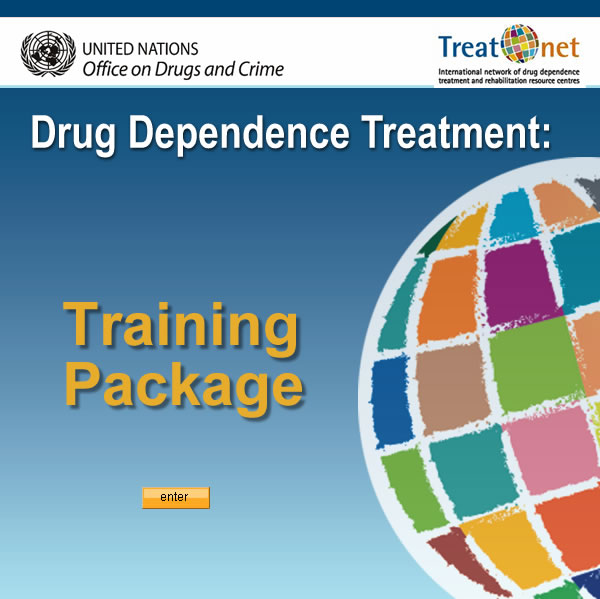
The Treatnet Training Package was developed by an international consortium of clinical experts, researchers, and trainers from. international Capacity Building Consortium, led by the University of California Los Angeles / Integrated Substance Abuse Program (UCLA/ISAP). It is a central component to the effort by the UNODC Treatnet initiative to increase the level of knowledge and skills on substance abuse around the world. The Treatnet Training Package consists of a comprehensive set of addiction training materials that have been designed to be used by professional trainers to improve the treatment practices of health care professionals in substance abuse treatment settings. It reflects the most current, accurate, and empirically supported information on the treatment of substance abuse disorders. The information for this training package was drawn from UNODC and World Health Organization (WHO) materials, as well as from research and training materials from over 15 countries.
The primary target audience for these training materials are service providers (physicians, psychiatrists, psychologists, counsellors, social workers, case workers, nurses, health educators, prison staff, etc.), as well as service managers, planners, and students throughout the world.
The Training Package consists of an introductory presentation describing the critical considerations for conducting effective training sessions. The core of the clinical training material is contained in 3 volumes of PowerPoint presentations (Volumes A, B, C), along with the Leader's Guide, written training materials, and a bibliography of resource materials. In addition, a 4th volume (Volume D) provides information and guidance on several important treatment operational and administrative procedures. In addition to the PowerPoint lectures and Leader's Guide, each module has a set of support documents that are designed to support the training effort. These documents include: a brief knowledge assessment form to measure trainees’ topic knowledge before and after training sessions; a trainee satisfaction feedback form; screening and assessment forms; and a variety of clinical forms to guide clinicians in the use of specific clinical techniques.
